#Barong & Kris Dance
Explore tagged Tumblr posts
Text
Barong - Day 25
Race: Avatar
Alignment: Light-Neutral
April 24th, 2024

I'd like to start this daily demon spotlight with an admittance of bias. Barong is my favorite demon in the series, bar none. In celebration of making it to 25 (!!) days of this series, I've decided to let the holy cat out of the bag. Barong is the demon that introduced me to Balinese mythology, has saved my hide several times throughout the series, and has an adorable and unique design to boot. He stands right next to, if not above Black Frost and Chernobog in my book. Past that, though, I would also like to say- thank you all for sticking with me for 25 days! It's been so damn fun, and I plan on continuing this series for months, if not years to come. I know it's a little early for the ivories, but the small community that has been built up over time has given me so much life and energy!
With that sappy stuff out of the way...
Today's demon of the day lies in the form of the great panther, protector of mankind, and host of all things good, Barong. Bali mythology is surprisingly easy to look through, having solid roots and foundations, as well as its origin being in a somewhat small subset of Indonesia, though this isn't to say it's not complex. Balinese mythology takes a unique form, one similar to the worship of Ame-no-Uzume, wherein several of its stories aren't plays nor grand tales, but rather, fascinatingly hypnotic dances. Barong's appearance in these dances is that of a glamorously decorated (and very ambiguous) animal that I would personally say looks somewhat, vaguely similar to a lion?
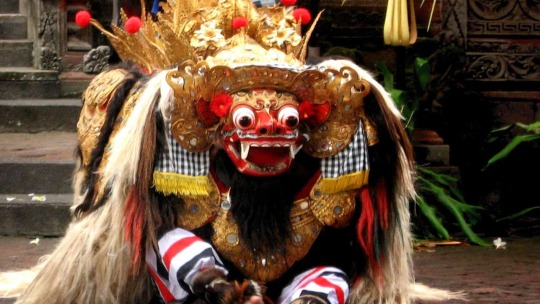
However, the type of animal it is isn't that important, and admittedly just makes me confused. What is important is Barong's role in Balinese mythology, that being of a protector of humanity itself- in the mythos surrounding Barong and its eternal rival Rangda, Barong represents good health, good fortune, and has reign over all the spirits that inhabit the small province. The most prominent myth featuring the great avatar is recanted in the famous Kris dance, a dance representing Barong battling with Rangda. During the hypnotic trawl, dancers bring swords dangerously close to hurting themselves, though they emerge unscathed, watched over by two dancers in an ornate harness holding up the avatar of Barong who dances furiously behind them.
The dance begins with two monkeys and Barong engaging in dance, though quickly escalates as witches sent by Rangda attack the frolicking group. The dance-drama escalates from there as Barong tries to reign back control over the kingdom, which had found itself under siege by Rangda, eventually leading to the most iconic scene of the play, wherein two palace guards stab themselves with kali daggers in a desperate trance under Rangda's control- though they emerge unscathed as Barong comes to the rescue and engages in battle with the witch, protecting the guards with his holy magic. After a long and fraught dance between Barong and its rival, eventually, the holy avatar emerges victorious, and the kingdom is returned to peace and prosperity.
Barong is not just an artefact of the dance, though- he's an important figure in Balinese tradition, one held in reverence and good spirits, and the dance is simply held to represent the eternal struggle between good and evil, as well as celebrate the triumph of the love and goodness that Barong represents. People equipped in Barong costumes even, on occasion, parade around Balinese towns in order to ward off evil spirits and bad luck. Barong is locked in a never-ending battle against Rangda and the forces of darkness, yet never gives up hope; As a Bali volunteer in the Bali Volunteer Program puts it, "Once the trance is over, Barong and his supporters finally overthrow Rangda. But she does not die. Instead, she reincarnates and Barong must defeat her again. The fight never stops. It is symbolic of light’s eternal strife against darkness."
In the SMT series, Barong is depicted faithfully, though far more blue than red. Decorated in jewels and studded in silver, the Balinese lion dances in combat, easily connecting to the dance-dramas the beast is so frequently depicted in. Interestingly, a common series staple is that of Rangda and Barong's fusion leading to Shiva, and while unconfirmed, I have an idea as to why this may be the case. While Barong and Rangda are from completely different mythologies, they both represent opposing forces of light and dark, something that Shiva, a god of destruction who is not evil, is an inherent blend of- Shiva is both light and dark, good and evil, while Barong is good, light, and Rangda is evil, dark.
All in all, Balinese myth's hypnotic dances and beautiful performances lend to an amazingly designed demon that truly fulfills all it sets out to do, represents an underrepresented mythology, and stands out as my personal favorite demon in the series. Next to Chernobog and Black Frost, of course. And also Parvati. And Mother Harlot. Am I just edgy?
#shin megami tensei#smt#megaten#persona#daily#smt nocturne#barong#bali#baliindonesia#balinese#hehe funny doggy..#the dances that i talk about in this dds are really fascinating to look at#i didn't put any pictures of the dances themselves due to how most depictions are#very similar in appearance to self harm?#but if you can stomach it they are fascinating#self harm mention#tw sh related
14 notes
·
View notes
Text
Christmas in the Philippines stands out for its unique and festive traditions, rooted in a mix of religious devotion, cultural heritage, and a warm, family-oriented society. Here’s what makes it distinctive:
1. The Longest Christmas Season
Begins in September: Filipinos start preparing for Christmas as soon as the “Ber” months (September to December) arrive. Decorations, carols, and festivities begin months before December 25.
Ends in January: The season often extends until the Feast of the Santo Niño (Third Sunday of January) or even up to the Feast of the Three Kings.
2. Simbang Gabi (Night Masses)
A series of nine dawn masses held from December 16 to 24. It’s a deeply spiritual tradition, reflecting the strong Catholic faith of the Filipino people.
Attendees believe that completing all nine masses can grant special blessings or fulfill a wish.
3. Parols (Christmas Lanterns)
The parol, a colorful, star-shaped lantern, symbolizes the Star of Bethlehem. Made from bamboo, paper, or capiz shells, it decorates homes, streets, and public spaces.
Pampanga, the “Christmas Capital,” is famous for its grand Giant Lantern Festival.
4. Noche Buena
A grand family feast on Christmas Eve, after the midnight mass. Traditional dishes include lechón (roast pig), ham, queso de bola (cheese ball), spaghetti, and various Filipino desserts like bibingka and puto bumbong.
5. Caroling and Street Performances
Groups of children and adults go door-to-door singing Christmas carols, often accompanied by makeshift instruments.
Many people give small cash gifts or snacks as tokens of appreciation.
6. Filipino Hospitality and Balikbayan Tradition
Many overseas Filipino workers (OFWs) return home during Christmas, making it a time for family reunions.
Gifts sent by OFWs, often called balikbayan boxes, symbolize love and connection across distances.
7. Christmas Parties and Kris Kringle
Companies, schools, and communities organize early Christmas parties, often including Monito-Monita (a local version of Secret Santa).
Parties feature games, dancing, and festive food.
8. Spiritual and Communal Spirit
Christmas is centered on faith, family, and community. Activities like church events, outreach programs, and neighborhood gatherings foster a sense of togetherness and generosity.
9. Unique Christmas Music
Filipinos love Christmas music, with traditional carols and local hits like Jose Mari Chan’s “Christmas in Our Hearts” and “A Perfect Christmas” being played endlessly during the season.
Christmas in the Philippines is a mix of solemn religious observance and vibrant, joyful celebration, emphasizing family, faith, and community. It reflects the warmth and resilience of Filipino culture.
#barong tagalog#philippines#barong#pinoy#philippines fashion#barongtagalog#barongtagalogforwomen#womensfashion#shopping#barongs#christmassale#christmas#christmas sale#holidaydeals#holidayshopping#christmas deals
2 notes
·
View notes
Text

Balinese traditional dances & performances.
Barong Ket dance from Bali island, Indonesia.
Also known as Kris dagger dance which shown in picture that of a bunch of possessed stuntmen performing mystical trance & self persecution acts using sharp weapons like Kris dagger.
The Batubulan village district of Gianyar regency is known for its iconic Barong dance & performance around the Bali island.
#baliisland#baliindonesia#baliart#balitrip#balinese#barongsai#lion dance#traditional art#folk dance#balivacation#balitravel#isle of enchantment#traditional dance#balinesedance#art and culture
2 notes
·
View notes
Text
📍✈️Traveling to Bali: Part 1 - Ubud (Day 1 & 2)

Bali, Indonesia - an island known for its good food, religious sites for its temples, beaches, a shopping destination, and more. I was thrilled when my friends and I decided to visit Bali since I love learning other country's culture, little bit of history, and seeing breathtaking places.
I’ll be sharing my Bali experience both in Ubud and Seminyak last November 21 - 27, 2018. This travel blog about Bali will be divided maybe into 3 to 4 posts since we have visited a handful of spots in Bali. I’m also planning to have a separate post for our itinerary and budget we had for Bali, Indonesia. I will also share my Bali trip vlog at the end of this post to better see what Bali has to offer.



Our flight from Manila to Bali was at 3:30am via Cebu Pacific. We arrived at Bali, Indonesia at around 8 in the morning. What I really love about early morning flights is that you can see the sunrise in a bird’s view and the clouds upclose. Just looking at the sunrise and clouds in this view just gives out a serene vibes.

Once we have arrived at Ngurah Rai International Airport, we went straight to the Immigration, get our luggage, and find Klook for our sim card/data.
Afterwards, we were looking for our driver for our entire stay at Bali. Hiring a driver at Bali was very very convenient since transportation were mostly motorcycles, and taxis. It will also lessen the chance that you would be spending more when hiring a driver. Our driver, Jo, was recommended by my colleague. Jo was very kind and also became our guide the entire trip. He would suggest a lot of tourist spots and places to visit, and also would recommend the places to go for a certain day to maximize our stay in Bali. He also brought us to restaurants that has amazing food.
DAY 1 November 21, 2018
KANDA VILLA

We had an early check-in at our Villa named, Kanda Villa, to leave our things and luggage so that we would be able to explore Ubud comfortably.
UMA PAKEL BALI SWING




First destination of our day 1 in Bali is in Uma Pakel Bali & Swing! This is not originally the swing we would want to try but Jo recommended this since this will have less people. Also, mostly all the swings are just the same.
The view at Uma Pakel was just so refreshing and makes your heart at peace. Entrance fee was IDR150,000 (PHP555).

Here, I am nesting. 🐣
It was actually terrifying to climb in and out of this one. 😅 The "nest" even wobbles when you move. But as what they always say, all for the photos! 📸
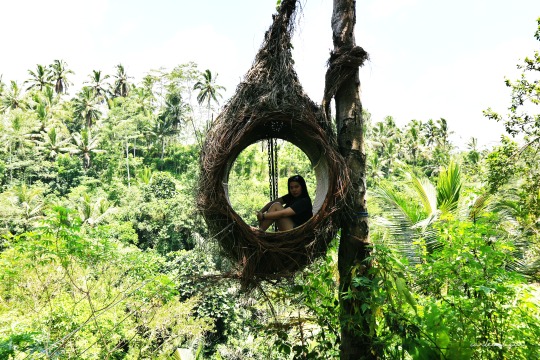
Literally just chilling and it seems I'm about to lay an egg. 🥚 😅

I think my stomach just turned upside down while trying the swing and screaming for my life. 😅 It felt as if I’m going to be thrown towards the trees during that time. 🤣 However, no regrets in trying the swing! I really do recommend to try it at least once.
TEBA SARI RESTO BAR - LOUNGE
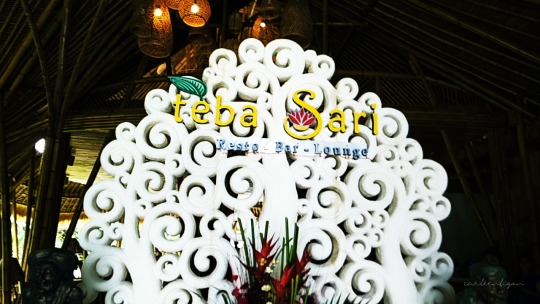
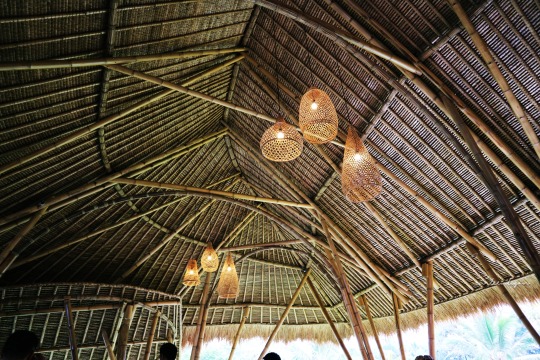

For lunch, we ate at Teba Sari Restaurant Bar-Lounge. It is located just across/opposite of Uma Pakel Bali & Swing. This was our first meal at Bali and I’m loving the interiors of the restaurant.
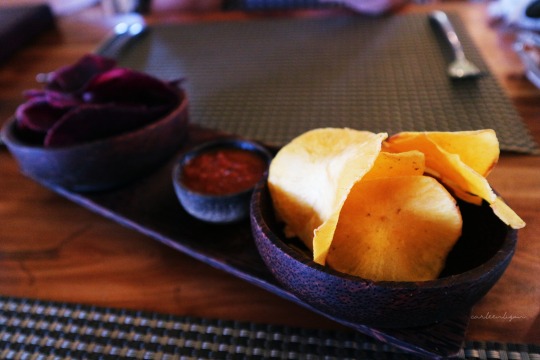
Free appetizers were given to us! It was cassava chips with a spicy tomato dip and it was actually delicious.

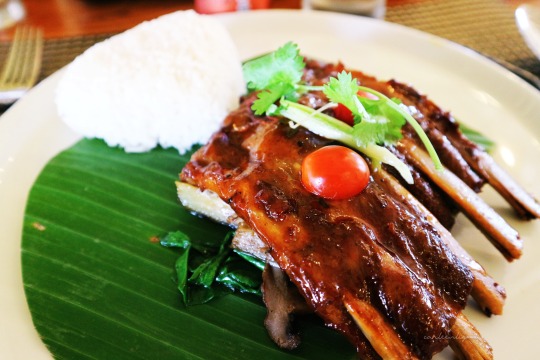
I ordered their Ribs since I heard ribs in Bali is good (which was totally true!). The meals included a grilled marinated pork ribs, steamed rice, sautéed green beans-eggplant, chili sambal, and salad pickle. We all ordered Ginger Ale for a refreshing drink.
TEGALALANG RICE TERRACES
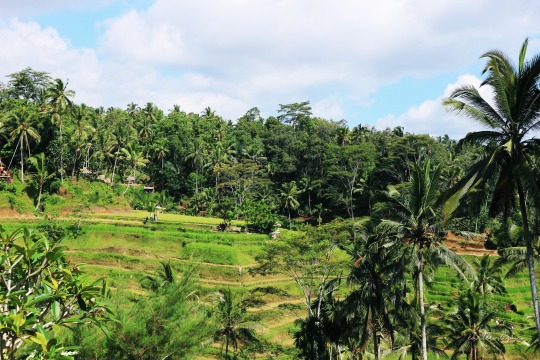
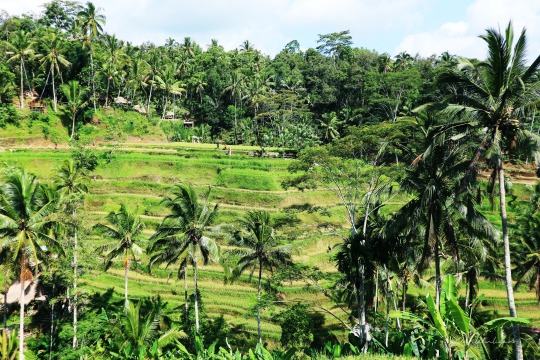
After having lunch, we visited the Tegalalang Rice Terraces. There was a minimal entrance fee of IDR15,000 (PHP55.50).

We actually didn’t stayed that long and explored the rice terraces since it was really hot that time.

We did a little shopping at Tegalalang Rice Terraces. The stores could be found exactly across the Rice Terraces.
If you have a short time in Bali and couldn’t visit the Ubud Art Market, I suggest you shop here instead. Prices were almost the same as the one in Ubud Art Market. We saw a rattan round bag which costs IDR90,000, same price as we saw in Ubud Art Market with the same style and quality.
TIRTA EMPUL TEMPLE

Last stop before calling it a day is at Tirta Empul Temple. Entrance fee was IDR50,000 (PHP185).

Before entering the temple, you will be asked to wear a sarong if you’re wearing shorts or a dress. Sarongs will be provided before you enter the temple without any charge. As for our case, we bought sarongs already at the shop near Tegalalang Rice Terraces for our convenience.
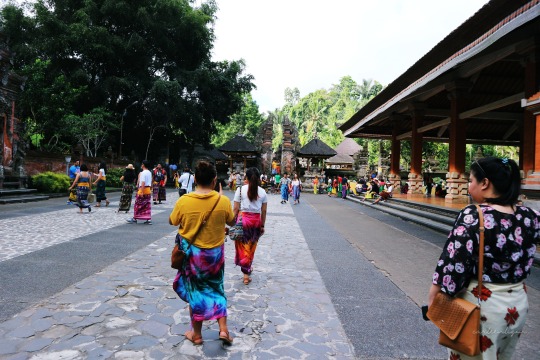

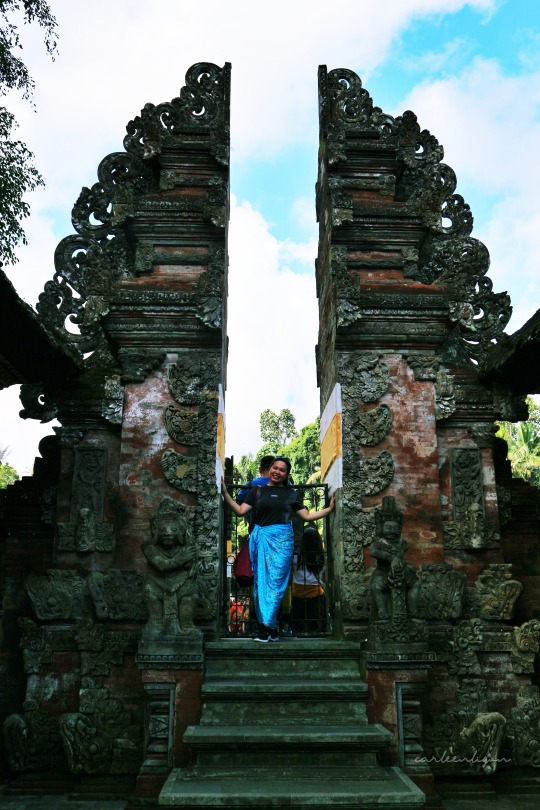
We actually didn’t know where to go since it was a little crowded and got “lost” upon exploring the temple.
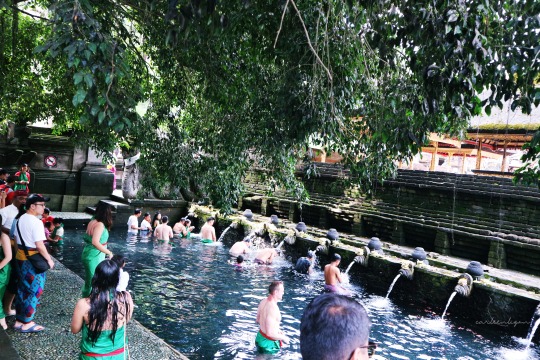
Tirta Empul is known as a water temple. People go here to have a bath on its holy spring water to purify their souls from the sins they committed. It is a ritual for purification.
We didn’t took a dip since we don’t have any extra clothes and towel with us.
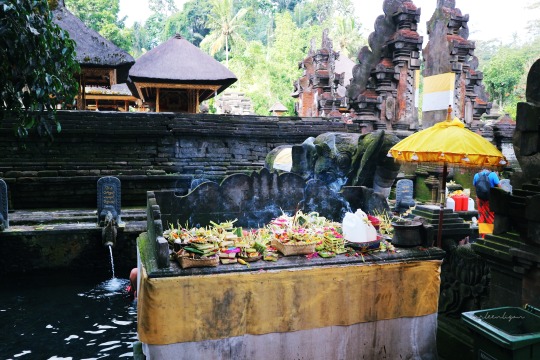
A place where they put their offerings.

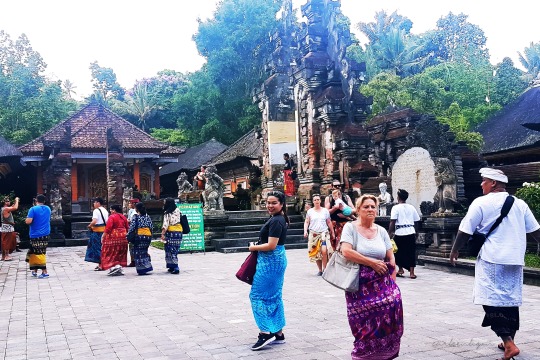
Here’s another side of the temple.
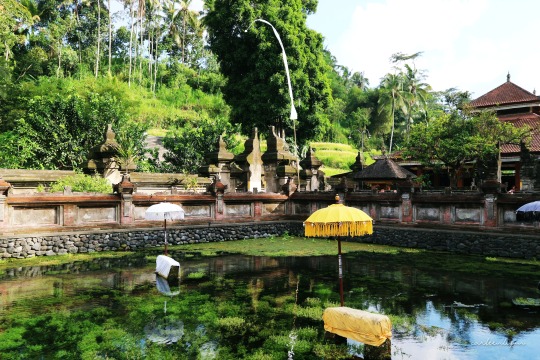


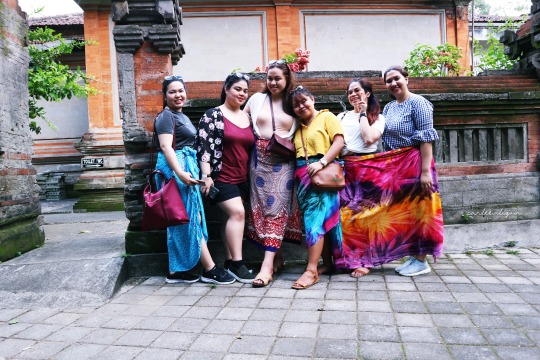
We went to a grocery store after visiting Tirta Empul Temple. There we bought our dinner and water supply for our stay at Ubud. I think we spend around Php2000 for dinner, some snacks, drinks, and bottles of water.
DAY 2 November 22, 2018
KOPI DESA


One of the thing we were excited every morning was this hole in a wall restaurant near the place we are staying at. This humble restaurant/cafe is Kopi Desa. 😍

The place was aesthetically good and food was the best! We had our breakfast here for our entire stay at Ubud and I was also consistent to order their Nasi Goreng Ayam (fried rice) which was the best I’ve tasted until today. Nasi Goreng Ayam is a meal including stir fried egg and chicken meat in small amount of cooking oil or margarine, typically spiced ith sweet soy sauce, shallot, garlic, tamarind, and chili. A meal costs IDR 28,000 (PHP 103.6).
My breakfast options were in different variations but it as a must that the fried rice was included in my meal like for the 1st day, it the fried rice with egg only, 2nd to 4th day were fried rice with Chicken Satay (Chicken BBQ). Plus, I have convinced my friends to order and try it - that’s how I really love it! 😂
THE BARONG & KRIS DANCE: JAMBE BUDAYA
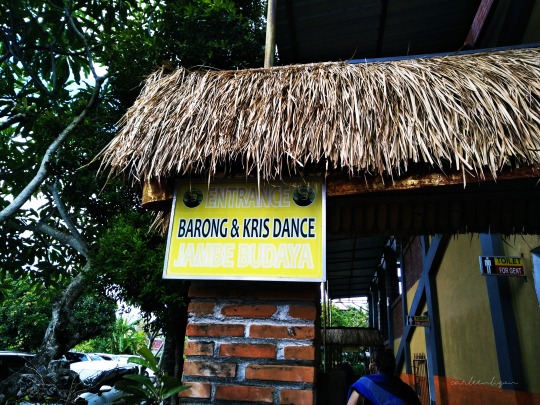
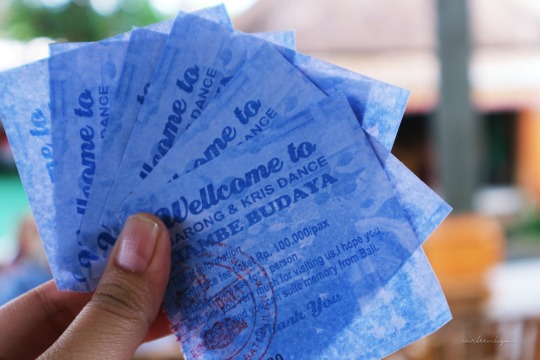
1st on our itinerary was the Barong & Kris Dance: Jambe Budaya. It was a cultural dance and fee as IDR100,000 (PHP370) per person.

This is the overview of the story of the dance.
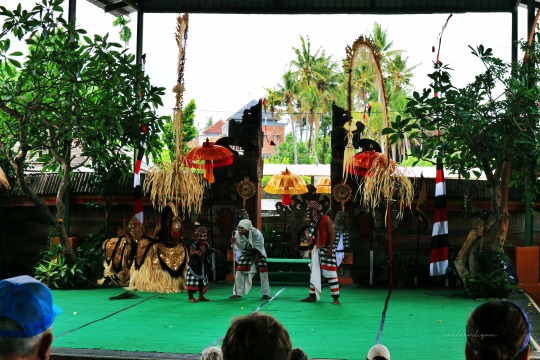

I really like the effort they put in showcasing the tourists their culture.

At the side were performers providing for the background music of the dance.
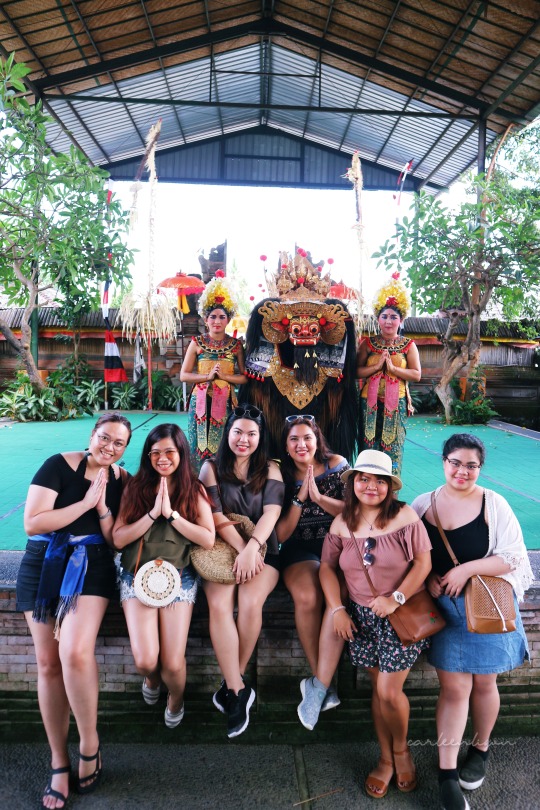
It was a good experience to see and watch a part of Indonesia’s culture knowing they are trying to preserve and show it to everyone.
GITGIT TWIN WATERFALL

In my vlog below, you would notice we were laughing about “Gitgit” because it sound’s like the line Jae of DAY6 says all the time, “Let’s get it!” Like get it = gitgit. 🤣 (We were still on PCD for DAY6 at that time).
There was en entrance fee of IDR20,000 (PHP74). They said it was used to preserve the walking pathway and help the unfortunate children to go to school. I think it was reasonable to pay the amount for the cause, also, the fee includes a tour guide.
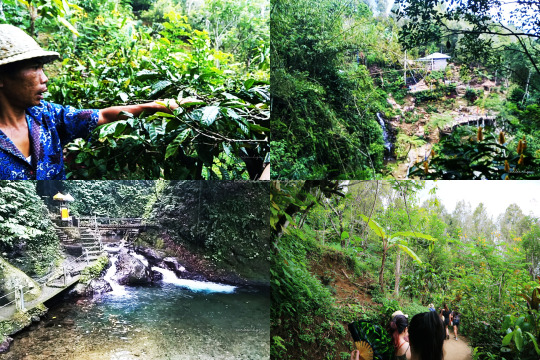
It was trekking time for us! Doing trekking was another experience to be in nature - very refreshing! It was truly a breathe of fresh air for us.
Our tour guide said that it was good we went there early because it tend to be crowded during the afternoon.
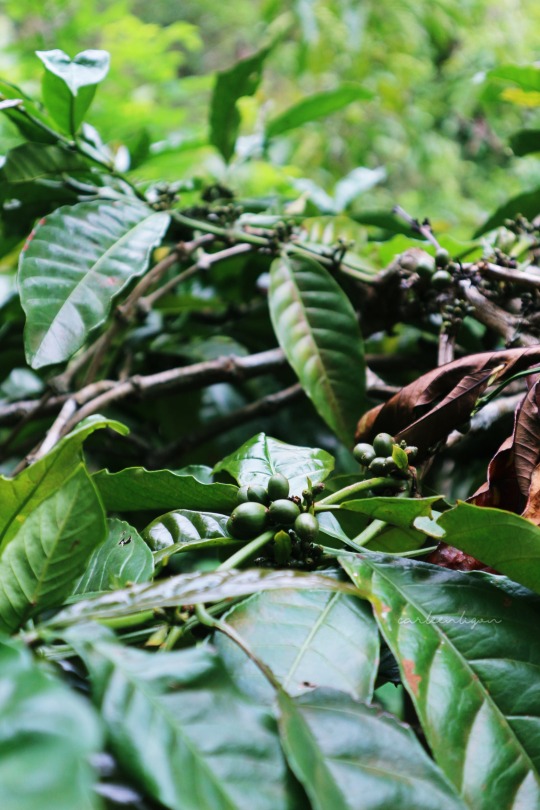
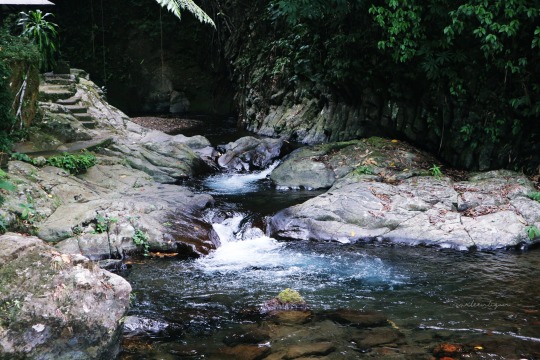
We actually didn’t finish the whole trekking since it will take another 1-2 hours finishing it and another 1-2 hours in going back.


The waterfall was just so beautiful! The water was so clean and clear.

This is the small bridge to be able to go to the waterfall. I was actually a little scared in crossing cause it was a little slippery and I might fall into the water. 😅

BILLY’S LAKE VIEW RESTAURANT

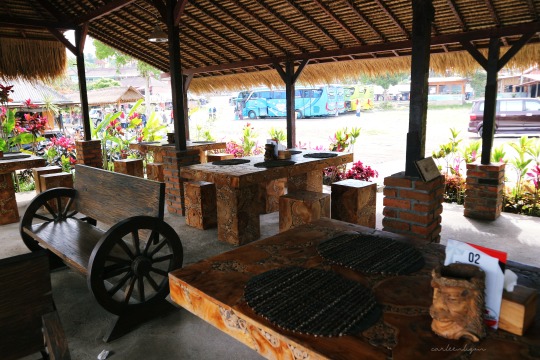
Lunch at Billy’s Lake View Restaurant! We were already starving hence, the super lack of photos! This restaurant was near to our next destinations.
Food was alright and was in a buffet style. There were different options to choose from starting from soups, main course, and desserts. Taste-wise, food was ordinary. The buffet also included refillable ice tea. Lunch buffet at Billy’s Lake View Restaurant costs IDR 100,000 (PHP 370).

At the back was our view while having our lunch.
HANDARA GATE
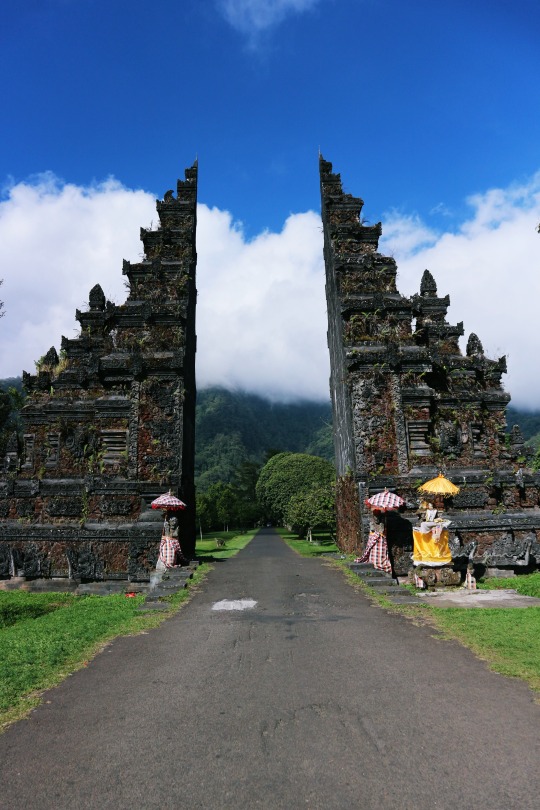
The Handara Gate is literally a gate of a Golf Field. A fee was required to be able to take a photo with the gate consisting IDR30, 000 (PHP111). A little pricey for a photo in front of a Golf field gate, but for the sake of experience and memory to cherish, we just had to have a photo.

We actually need to look back and forth since there were cars and motorcycles passing through.
ULUN DANU BERATAN TEMPLE

Final stop for the day was the Ulun Danu Beratan Temple. Entrance fee costs IDR50, 000 (PHP185) per person.

Ulun Danu Temple is another water temple in Bali, Indonesia and is located in Beratan Lake.
It was actually very cold and windy when we visited the temple. It felt like we were in Tagaytay.

The temple is also known for it “floating” appearance when the water level is high. Too bad we came when the water level was low and wasn’t able to see its “floating effect.”
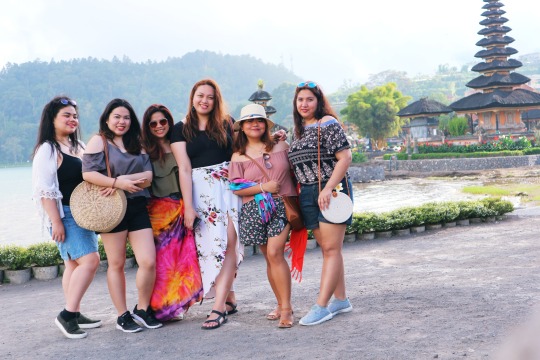
❤️
Below is a vlog on our adventures for day 1 and 2 in Bali. Feel free to watch it!
youtube
So that’s day 1 and 2 in Ubud, Bali, Indonesia! Next posts will still be about our stay in both Ubud and Seminyak, Bali.
Other blog post related to Bali below: 🔗 BALI DAYS 3 -5 BLOG POST 🔗 BALI DAYS 6 & 7 BLOG POST
*Conversion of IDR to PHP are rounded and used IDR 1 = PHP 0.0037
*If you’re going to Bali and needs a driver/transportation, I highly recommend our driver during our trip last year. If interested, you can message me through my social media accounts or e-mail me to know his contact number.
#Uma Pakel Bali & Swing#Uma Pakel#Teba Sari#Swing#Bali#Indonesia#Food#Cassava Chips#Ribs#Teba Sari Restaurant Bar-Lounge#Tegalalang#Tegalalang Rice Terraces#Tirta Empul#Tirta Empul Temple#Kopi Desa#Nasi Goreng Ayam#Barong & Kris Dance#Jambe Budaya#Gitgit Twin Waterfall#Waterfalls#Nature#Travel#Travel Vlog#Travel Blog#Blogger#Handara Gate#Ulun Danu Temple#Ulun Danu Beratan Temple
2 notes
·
View notes
Note
Hello! I'm researching Balinese culture, especially its unique religion and folklore, and saw some rare details that don't seem acknowledged by SMT. Rangda is often seen as either an avatar or apprentice of Durga, so I'm surprised there's no evolution from Rangda to Durga, or even Calon Arang to Rangda! And Barong, though quite vague, is described in the Barong Swari as Vishnu or Ishvara. A Vishnu fusion would make sense for him. A Balinese native told me she wasn't sure of any Shiva connection
...Following on my Balinese post, it's a shame SMT's special interactions dont acknowledge the cultural philosophy of Barong and Rangda. They don't fight each other simply because one is good or evil, in fact Balinese religion often specifies that there is no real dualism, and forces that might seem opposed or might seem a certain way on the outside are actually spiritually linked in a complex system. This is symbolically why there is never a victor in their conflicts, only healing for the village.
I can answer these!
Durga doesn't appear very often in SMT, not since SMT2/if..., so there's no real chance of a connection.
Similarly, Calon Arang hasn't appeared since SMT1.
Why do Barong and Rangda make Shiva? Here's an official explanation:
Why does the fusion of Ranga and Barong result in Shiva? Both gods originate from the island of Bali and since they are rivals, their personalities are polar opposites. Ranga is dark, Barong is light so obtaining Shiva (the god of destruction and creation) from their fusion is valid.
https://dijehtranslations.wordpress.com/2016/08/08/qa-from-club-jakyou-no-yakata/

For the second part, the lack of interaction between the two is just due to SMT's video game nature. Rangda actually has an important gameplay role since she is one of the few common random encounter demons with innate Phys Repel, so when she's around a change of strategy is usually in order. Because of this, she's never afforded a story role and thus Barong hasn't either.
That said, Barong and Rangda have a special conversation interaction in Nocturne.

Moreover, Rangda repels physical attacks to represent her role in the Barong dance where she tricks the kris-wielding soldiers into attacking themselves:
Why does Tamamo repel swords? Demons like Tamamo, Rangda or Girimekhala repel sword attacks because they actually trick their enemy into attacking themselves. These demons use their magic to form apparitions around them and cause the ones who approach them a kind of hallucinations. That is why one needs long distance attacks like guns and spells in order to avoid these apparitions.
(ibid.)
Barong and Rangda were actually in the mix for possible Divine Powers candidates before Krishna was chosen, according to Yamai:
We picked [Krishna] when we were trying to decide on members of the Divine Powers; this was back when we created the concept of polytheism versus monotheism. Other options were Japan’s Arahabaki or Bali’s Rangda and Barong, famous names in the Megaten series, but they would have had little chance to stand against a religion with one billion followers worldwide, so we settled on Hinduism.
https://dijehtranslations.wordpress.com/2016/08/12/970/
Until they get another shot at major plot significance, Rangda and Barong might never be represented wholly accurately. But if it's any consolation, SMT has drastically increased awareness of both outside of Asia and they remain a notable duo in the series!
39 notes
·
View notes
Photo

My oc, Siro Isagani De la Huerta y Monterro. Occultist, demonologist, and master of the dark arts.
(I feel like I should note that I have used other people’s art as reference and help on how to draw his pose and also the bottom of his coat.)
Backstory below (warning: a lot of words).
-----------------------------------------------------------------------------------------------------------
In a clearing just off the beaten path sits a caravan, and sitting on its edge is a young boy, his head crowned by four horns. He’s hunched over, his pale white eyes blind to everything except the large book on his lap. As he finishes the page, he raises his right hand, his only hand, pops the knuckles in his six fingers, and turns the page. Instead of the curvy serpentine letters like the last, this page is full of diagrams and circles and other sacred geometries. It racks his mind and if he was any other kid, he would’ve put this book down a long time ago, but he is his parents’ son, and he’s eager to prove his worth as such.
A small squeak emerges from his barong as a small fruit bat climbs out of its neck. It looks briefly at what its master is reading before deciding its disinterest and then lightly taps the boy’s face with the tip of its wing.
“I take it you’re hungry, Mana?” The bat nods her head and squeaks excitedly.
The boy pushes the heavy black-leather book off his lap and unfolds his legs to get up. As he opens the door, he chants a small incantation, and the book lifts itself up as if by a spectral hand.
The inside of the caravan is larger than the outside, just slightly though, just enough for his parents and him. As he walks over to the kitchenette, he gestures the grimoire over to the bookcase where it shelves itself neatly between other unmarked and half-singed books. With a knife and some pressure from his stump, the boy manages to peel and section an orange. As he feeds the pieces to his familiar, his gaze wanders over to the bowls of cold and uneaten arroz caldo he made for his parents earlier. It was not unusual for his parents to be gone for days, but they should’ve been back by now.
As Mana finishes the last orange slice and slowly drifts back to sleep, the boy picks her up and carries her over to his bed and lays her down on the pillow. When he turns to gesture to the bookcase for another book, his eyes find themselves wandering towards the window and he notices the sea of red and orange trees outside. Wasn’t it summer when they left?
-----------------------------------------------------------------------------------------------------------
Before a circle of candles and black chalk stands a young boy, the same boy. Floating in front of him and held aloft by shadow silk lies an open book with charts and graphs and inexplicable math. He had stayed up nights trying to decipher its text, trying to find out what he needed to do.
The boy raises his arm perpendicular to his self. He doesn’t bother rehearsing his lines; he’s practiced them so many times before and he knows through and through. The boy chants, and when he does, the words come out wrong, they come out backwards, the candles roar, and the smoke bellows. The lines of the circle burn and the words along its edge scream themselves into existence. The air coils around itself above the circle and the smoke falls into its whirlpool.
His eyes gleam bright as stars and his lips curve up. A warmth of pride, something new, washes over him. I’ve done it! I’ve done it. When they come back, they’re gonna be so pr-
The words fall out of the air as blood and the incantations splatters on the ground. Acrid iron is all he smell and taste. The boy watches the portal fizzle and fade before his eyes as his spell fails, as he fails. The boy doubles over himself and he feels his legs give way to infinity. The ground is still there, but he feels himself falling and falling and falling into himself. All he can see or sense is dark and void lit only by bright and flashing stars and impossible shapes and colors. It is not too long after he loses consciousness that a man in black finds him writhing on the ground.
-----------------------------------------------------------------------------------------------------------
In a room lit only by lavender-scented candles stands a horned man. The candlelight glints and glimmers off his many jewelry; from the adornments on his horns to his earrings made of fangs or to the gold agimat hanging from his neck. The candlelight also illuminates the relics he keeps in his room; his ancestors certainly were called “The People of the Knife” for a reason. Within the room are also bookcases and stacks and heaps of scrolls and grimoires and tomes, a few belonged to his father, who sought to preserve his culture. The last thing of note is the chalk circle the man stands before. If this was any of his other rituals, it would have had freshly-baked cookies and a cup of tea inside as a treat for the summoned, but this wasn’t any other ritual.
He’s done this one before, and he’s failed it before, but not again. His years studying under The House have taught him much and he has learned many secrets and arcana. Within one hand, within his prosthetic, he holds a kris, already dark with his blood, and he holds his right hand clenched. He glances at the clock on the wall, waiting for it to hit almost midnight, and then he makes his move. He raises his arm, holding it out, and lets the blood spill on the circle as he starts to chant;
Em evaelt nod esaelpe me volem
esiarp Emd ni fem otem ocuoy ge
bl Uoyot llacl do olbym fodoo lb
The candles flicker and flare and shadows dance. The air grows still as death, and just as cold, and it almost seems like time has died. A sudden gust of wind whirls in from nowhere and.. nothing. Nothing happens. Seconds long as hours pass as the man lets it sink deep inside, casting his head downward. He turns away from the circle, tries to let his disappointment pass, tries to not let it get to him. He fails like he always does. All he can think of is how much it hurts. He lowers himself onto the ground, hunched over, head in his hands, when he hears a voice as sickly-sweet as sugared poison.
“You know, Siro, you’re not as worthless as you think you are.”
Startled at the voice, Siro scrambles to the other side of the room, to the circle on the ground. His pale eyes flick back and forth between nook and cranny, tracing the outline of the room, trying to find the source, when he realizes his shadow stands tall with short horns and gleaming green eyes.
“It’s true, you know.” There’s a hint of familiarity, as if the figure knew him. A die rolls. It lands on one; he doesn’t notice. “You didn’t mean to summon me, did you? That’s certainly worth something to me.”
Siro, eyes wide as moons, gulps and gently shakes his head. “I didn’t. No. Y-you’re supposed to be in the-”
“And I take it you can cross realms, or learn to, can’t you?” If the figure had a mouth, it would’ve grinned. “And how much can you summon at once? Armies? Legions?”
Siro stares in silence at the shape on the wall as Mana squirmed beneath his robes. The imp knew who this was, understood the hunger in its eyes, but her warnings came out as nearly silent chirps.
“Staying silent? All right then, keep your secrets. Just know that if I” The shadow places a hand on their chest. “was your parents, I would be so proud of you. Even prouder of what you might become. What you might accomplish with me.”
“What do you know of my parents?”
“I know that they’re not here, are they? But I am. I answered your call. Your plea for help. Not them.”
“I said, “ Siro swallowed a breath of air. “What do you know of my parents?”
The shape grinned. “Perhaps I know where they might be. Perhaps I know how you might prove how worthy you are to them. Of them. Is that something you’re interested in?”
Siro looked down at his hands, closed his eyes for a moment, then looked back up at the figure. “I know how this works. What do you want from me? What’s your price?”
“Listen is all. There’s no harm in that, is there? You don’t even have to obey me. Just listen to what I say, and I’ll show you how to find them.” The shadow peeled an arm off the wall and held it out. “Is that what you want, oh conjurer of mine?”
Standing up, Siro looked through the figure into nothing, into the void, and contemplated what to do. His parents were heroes. They saved countless people, countries and kingdoms. Growing up the son of such great people was a privilege, he was told, an honor, and yet who was he but a failure unworthy to have them. If there was some way to honor them, to make them proud... Siro didn’t finish that thought. He looked back at the figure, at its hand, never noticing its six fingers, and grabbed it. It was as cold as death.
The clock struck midnight. “Well then, welcome Year Siro.”
#paime's ocs#paime's art#tldr: his parents neglected him as a child and his desire for love and praise is being used to manipulate him#i have like more detailed stuff for this guy but i want everyones backstory done first before i post it#anyways the last line is a pun#'Year Zero' is a song by Ghost about the antichrist
2 notes
·
View notes
Text
Equatorial Beasts - #1
Subject: Leak (/le’jʌk/ -- “ley-yuck”)

HISTORY:
Even though they’re mainly known to be from Bali island, according to the mythology, they actually originated from East Java, particularly the Kingdom of Kahuripan, during the reign of King Airlangga (alternate spelling: Erlangga).
A dark shaman who is also a single parent named Calon Arang (this name cracks me up because calon means “prospective; soon-to-be” and arang means “charcoal”. Imagine naming your kid Charcoal) who has a beautiful daughter named Ratna Manggali. Ratna Manggali may be pretty, but nobody dares to flirt with her and it makes her sad nobody wants her as their wife. So Parental Unit Charcoal was enraged and unleashed their fury upon the village. Together with their four best and most powerful students--which were all women, by the way--summoned floating-headed demons and had them spread diseases to the village folk. Many died after the havoc.
The surviving folk reported to their king, who then consulted his mentor and royal light sorcerer, Empu Bharada. Bharada then sent his student to propose to Ratna, with the mission to infiltrate Calon Arang’s belongings and steal their magic scroll.
War between the kingdom against the dark shaman and their students ensued, with victory to the kingdom. Calon Arang tried to escape by shapeshifting into a garuda (see episode 2 for entry about this awesome creature) but was hunted down by Empu Bharada, who stabbed them on the chest with a Kris knife.
Empu Bharada disposed of the evil scroll into the sea as he and his king crossed the Bali Strait. But Empu Bharada has never seen Jumanji before, so the evil scroll arrived at the hands of shamans and magicians in the island of Bali, not yet a popular tourist attraction, and the dark arts of summoning the Leak thrived ever since...
WHAT THEY ARE:
There seems to be two definitions of what a Leak is:
The magicians that used the dark arts and then consumed by it, warping their humanity
The demons summoned by the dark arts
For this instance, I’ll talk about the creatures themselves, because that’s literally the point why I made this series.
The Leak is a shapeshifting demon that can take the form of a human or animals, though their true form supposedly looks like the masks and costumes worn in Balinese theatrical dances. They shapeshift into a disguise during the day, and revealing their true self at night when they go hunting. They can also turn into a big ball of floating fire.

(The four-legged creature on the left is NOT a version of Leak. It’s called Barong. It’s a costume of an animal meant to ward off evil spirits by taking shape of some powerful ghost honcho. The Barong is the nemesis of the Leak queen, Rangda.)
Leak have long unruly hair, which can range from dark black, brown, and even white. They have long tongues that hang out of their mouth, their teeth are long and sharp, and their eyes are said to never blink. Good luck winning a staring contest with these guys...
The demons are said to be found commonly in graveyards, where they would dig up corpses from the graves and feast on them, or collect the organs to make potions out of. Their other favorite diet is the blood of an unborn child still in their mother’s womb.
How do they extract unborn baby blood? I don’t know. Perhaps those nails aren’t nails--they’re suction tubes?
In their true, monstrous form, they are invisible to the naked eye, except to people who have learned magic, have trained to communicate with spirits, or if they’re born being able to see and communicate with spirits. Normal humans can see them in their disguised form, however. God knows if the stray dog you see in Bali is an actual dog or a Leak in disguise.
Unless summoned by shamans to do their bidding, Leak mostly just...exists, without causing much damage except towards the pregnant.
REPELLING THE LEAK:
Get a knife.
Stab that shit under the neck.
Cut that motherfucker’s head right off.
Or don’t.
There’s a weirdly conflicting statements on what to do if you have enraged the Leak. There’s a more peaceful route where you can simply just apologize and admit your mistakes if you did accidentally offended them. The other less than savory way is the one above. This conflict may have been due to the double definition of what Leak is, as I have explained before.
It seems like if you cut their head off, they can just reattach it and be fine again. However, if you cut their head from under the neck, the head will float away and prolonged separation of the head from its body will kill them eventually.
Getting out of Bali is also an effective way to escape the wrath of Leak. The magic that fuels the modern Leak are only effective in Bali, so if you get out of there before they kill you, you’ll be fine. Granted, you may have to circumnavigate your travel plans so your flight never has to transit there.
This concludes the first episode of Equatorial Beasts, my new mini docu-series of Indonesian monsters, cryptids, and occult creatures. It’s not perfect and I did leave out a bunch of stuff that are very complicated (like rituals and stuff like that, there’s actually a very detailed description on how to summon Leak but it’s not something I want to share.)
I hope you guys like it!
Next episode: The Garuda!
#monster#exophilia#terato#leak demon#leak bali#equatorial beasts#my writing#ghost#occult#indonesian ghosts#indonesian monsters#expansion of what i wrote a few days ago#there was actually more to them so here it is
35 notes
·
View notes
Photo

Barong and Kris Dance. (at Ubud, Bali, Indonesia) https://www.instagram.com/willflyforbeer/p/Bv-qLi7FWO8/?utm_source=ig_tumblr_share&igshid=p6ccu0bnwtvh
1 note
·
View note
Text
Barong and Kris Dance-6- Bali- Indonesia #shorts
Barong and Kris Dance-6- Bali- Indonesia #shorts
Thank you for reading my blog. Hope you enjoyed the video. Please view my other videos at Umakant’s Youtube or at Soubhagya’s Youtube channel. If you like my videos then please subscribe to the YouTube channel.
youtube
View On WordPress
0 notes
Text
Kintamani Volcano Tours
Kintamani Volcano Tours Kintamani Volcano Tours is one of best Bali full Day tour that you can book through us. This tour will take you to visit popular tourist attractions in the ubud, such as visit Batu Bulan Village which is popular by Barong and kris dance perfomance, Celuk village famous for gold and silver traditonal art, Batuan Village famous for traditional painting art, Tirta Empul…

View On WordPress
0 notes
Photo

Bali traditional dance is an ancient dance tradition that is part of the religious and artistic expression among the Balinese. Bali traditional dance is dynamic, angular, and intensely expressive. Balinese dancers express the stories of dance-drama through bodily gestures including gestures of fingers, hands, head, and eyes. Here are 10 traditional Bali dances that could hypnotize you with their own unique characteristic! 1. Kecak Dance 2. Truna Jaya Dance 3. Barong Dance 4. Legong Dance 5. Pender Dance 6. Baris Dance 7. Panji Semirang Dance 8. Puspanjali Dance 9. Balinese Topeng Dance 10. Panyembrama Dance Source : https://www.flokq.com/blog/bali/bali-traditional-dance For more information and if you have any question about holiday or tour package in Bali, Java, Lombok and Interest for group packages, company outing, etc. feel free to contact us: 🖥 www.goldenkristours.com 📧 [email protected] ☎️ Phone: +628179532525 (WhatsApp is Available) (at Golden Kris Tours) https://www.instagram.com/p/COe7xWugbLT/?igshid=44ifygn67c5q
0 notes
Text
youtube
Watch "Bali Ubud Barong Kris Dance" on YouTube
0 notes
Photo

Barong dance . Barong dance performance with kris-wielding dancers and Rangda in Bali The lion is the popular one, as it comes from the Gianyar region, where Ubud (the home of tourist's Balinese dance ritual viewing) is located. Within the calon arang, the dance drama in which the Barong appears, the barong responds to Rangda's use of magic to control and kill her to restore balance. In traditional Barong dance performances, he is portrayed in his struggles against Rangda, it is the popular part of Balinese culture. The mythical creature would dance along the street to the calon arang dance. A priest would throw holy water at it. . . How to support Bali Diving? Review us at https://review.balidiving.com/ . #padiathome #scubadivingmag #staysafe #padi #vitaminsea #oceanlife #balifundiving #balidivesafari #scubadivinginbali #baliscubadivingacademy #balidivingsanur #adventurescubadiving #baliunderwater #indonesiadiving #TaucheninIndonesien #BaliTauchschule #бали #дайвингнабали #duikenopBali #подводноеплаваниебали #Индонезия #индонезияисследовать #подводный #Санфиш #バリ島 #巴厘岛 #بالي . Credit- @singabarong_ — view on Instagram https://scontent-iad3-1.cdninstagram.com/v/t51.2885-15/103271486_287558292428586_4974441034310625184_n.jpg?_nc_cat=106&_nc_sid=8ae9d6&_nc_ohc=zob3aaURj2oAX8xpLpW&_nc_ht=scontent-iad3-1.cdninstagram.com&oh=1e81f816dec6aebcecc45472c4a947b9&oe=5F05F53B
0 notes
Text
10 Awesome Things to do in Ubud, Bali
This blog post was written in collaboration with Orbitz. All opinions are my own.
Every year about 6 Million travelers are taking a flight to Bali, and half of them spending some time in Ubud. It’s no surprise that the beautiful village became such a popular hotspot over the past decade. Ubud is a true treasure of Indonesia and it’s not hard to fall in love with this magical place…
3 month ago I made the decision to come back to Ubud for an extended period of time. I have gotten so much into yoga over the past year that moving there for a few months in order to deepen my yoga practice seemed one of the best things to do in Ubud.
I visited Ubud on many occasions over the past 10 years, and every time I wondered, what would happen if I just stay longer? Well, it was about time to find out. Here’s some inspiration for your visit �� 10 things to do in Ubud, Bali.
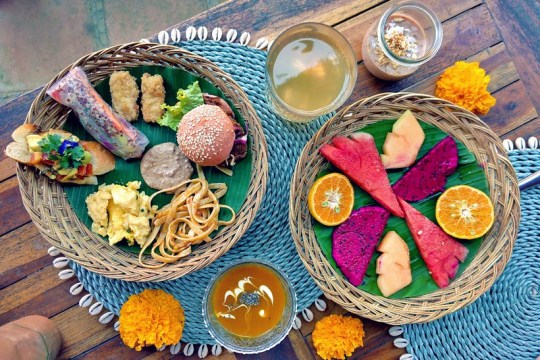
Ubud is an absolute food heaven! I’m not exaggerating! From all the places in the world, this is my personal favorite when it comes to food, and I’ll tell you why: Vegan food everywhere, it is unbelievable!! And not only vegan, you can also find vegan raw (at Alchemy), vegan macro (at Clear Cafe), and vegan gluten free (at Sawobali)… just to name a few of these wonderful places to eat. And the best of all, it’s extremely affordable. I have never paid more than $10 for a meal in Ubud.
Cooking is at the heart of Balinese culture, and there is no better place than Ubud to take a cooking class. One of the most acclaimed cooking schools in Bali is Ketut’s Balinese Cooking Class. The Cooking School runs programs that are perfect for anyone that wants to understand Balinese flavors, culture and food.
Too lazy to cook, but you would love to try different kinds of traditional foods? Take it easy, and go on a foodie tour in Ubud to enjoy a delicious culinary feast!
Tegallalang Rice Terrace is one of those surreal places you won’t forget. It’s even more magical during sunrise and sunset,however If you’re exploring the area without a guide, make sure to head to Tegallalang as early as possible (6AM) to escape the crowds. You can park your scooter on the main road on top.
The place is heaven for photographers and drone pilots, the rice fields stretch out for miles while the terraces sit at an elevation overlooking the countryside. If you get tired from hiking through the paddies there are plenty of cafes and warungs along the main road with million dollar views.
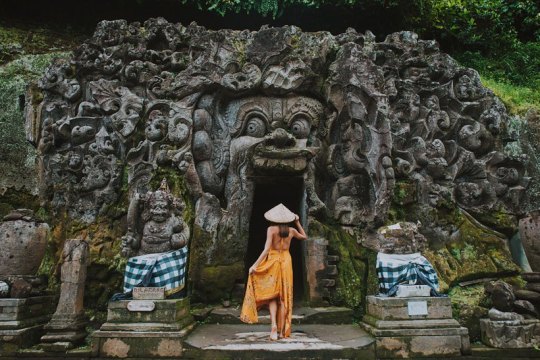
Goa Gajah stands since the eleventh century. It was initially constructed as a spiritual retreat to practice meditation away from the interference of society. A trip here rewards you with an area carrying sprawling vendors selling art, souvenirs, and refreshments.
Entry is free and you are offered the assistance of a guide when you enter through the ominous mouth of a demon – the doorway to this temple. A pool lies waiting with seven Hindu deities immortalized on seven vases acting as waterspouts.
Take your time to admire the animal carvings and ancient inscriptions along those ancient walls. The entire area carries an ornate, time swept feeling which does a great job of bringing one to realize just how magical this landmark actually is.
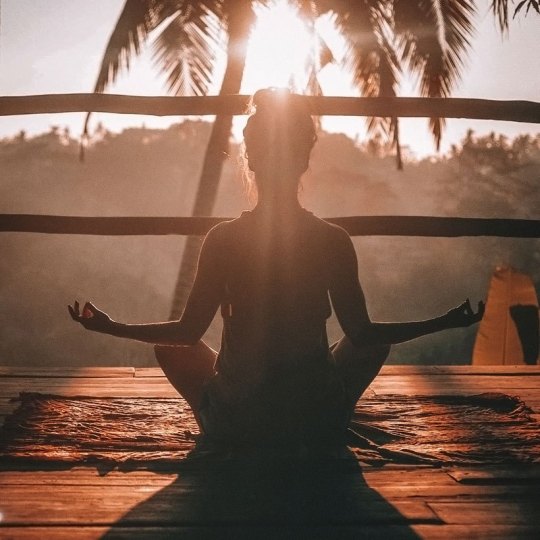
After Elizabeth Gilbert’s bestselling book “Eat Pray Love“, Ubud became the mecca for all those searching for enlightenment. Ubud is one of the most incredible places in the world, if you want to connect with yourself, deepen your yoga practice and learn about meditation. There are numerous yoga studios in Ubud, the most popular ones in the center are Yoga Barn, Radiantly Alive and Ubud Yoga Centre.
All of these studious above have a delicious restaurant onsite, and with plenty of yoga and meditation classes every day, it’s easy to keep yourself busy all day long without doing much. Try Healing Yoga at Yogabarn, it’s an amazing experience.
Yoga classes cost on average about $10 per class. If you’re on a budget, try one of the local studios, Saraswati is a smaller, but comfy studio, located in the center and classes are as cheap as $5.
Ubud Art Market and the Royal Palace are located in the heart of Ubud, and right next to each other. Between these two, you can easily get lost exploring and shopping for hours, buying souvenirs and taking in the awe-inspiring culture & history of Bali. The Royal Palace in Ubud is a structure that has stood since the start of the 8th century. The detail and level of preservation are remarkable and making this place a must see.
While in the area, you can’t miss the chance to sample some of the best Indonesian food in Bali. Puspa’s Warung is a popular and cheap eatery with some vegan choices. If you feel like having a healthy dessert, head to Acai Queen around the corner, they have the best vegan Acai Bowls in town!

There are approximately 750 monkeys living within the grounds of the Monkey Forest, visiting the sanctuary is one of the most popular things to do in Ubud. It’s a fascinating place to explore, with Hindu temples scattered across the complex.
Watch your stuff when you’re around the monkeys, they love to snatch things such as sun glasses, water bottles and obviously if you carry around food, they will grab it from you in no time! Don’t put your phone or camera beside you if you decide to take a rest on a bench. Basically attach anything tight onto you! I’m not kidding.
It’s 100k IDR to enter the Monkey Forest, that’s roughly USD7. If you’re on a tight budget, just walk the trail around the Monkey Forest. It’s free to pass, you’ll see many monkeys there as well, but motorbikes using this path as a shortcut, so the walk can get a bit stressful during rush hours.

Balinese music and dance is among the most vibrant displays of culture you’ll ever see. You can witness this spectacle at many places around town, one of them is at Pura Dalem Taman Kaja, where you can enjoy a hypnotic performance at the temple, featuring a Balinese Hindu drama & dance act, also known as Kecak dancing. The entrance fee is 100k IDR (US$7).
Another great way to a grand show of Balinese Culture is to head to Laka Leke Garden Restaurant. The buffet has a broad selection of vegetarian and Indonesian dishes. Enjoy your tasty traditional meals as you watch Kecak fire dances, Kris and Barong dances, and many other cultural displays. Every night a different show is on offer.
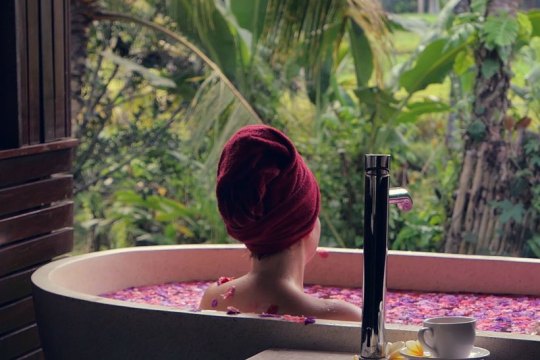
Ubud’s beautiful spas give a full-service treatment including ayurvedic massages, body scrubs, and local healing therapies like flower bath treatments. You can look forward to ancient Balinese remedies granting you the highest level of relaxation and therapeutics.
Where to go? You can’t go wrong with the world-class service of Botanica Bali Day Spa for luxury and true local tradition. Another leading option seated in the middle of the rice fields is Karsa Spa. Their full day treatments aside jungle trail scenery will have you calm and rejuvenated. Definitely make an appointment in advance!

Ubud is wonderful to explore on a scooter or bike. Once you hire a scooter and explore the city and its surrounding villages, you’ll soon understand why this is the favorite form of travel for locals. Stick to smaller rads and off-route streets to avoid traffic.
A trip through the city with multiple busy intersections can be quite daunting for a tourist, but the adventure is a unique experience if you dare to try. Please don’t ride a bike without helmet, International Driver Licence and insurance! If you’re not feeling confident, skip this! There are plenty of drivers available to bring you around. Unfortunately Grab, Uber and Gojek aren’t working in Ubud.
I’m renting my scooter from Darma Putra Bali Bike Rental and I’m pretty happy with their services and the conditions of the bikes. Give them a try if you’re looking for any scooter rental.
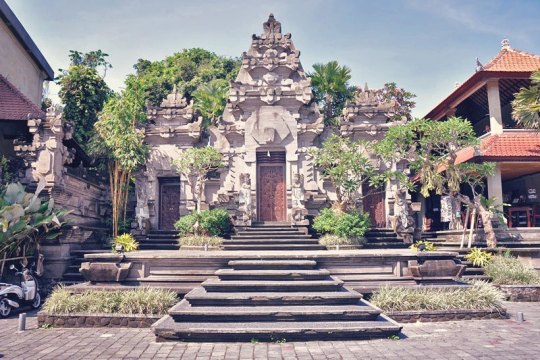
Photo © Jorge Láscar under CC BY 2.0
Puri Lukisan is the oldest art museum in Bali, with a focus on wood carvings, modern and traditional Balinese paintings. It’s a wonderful place to spend a couple of hours. If you have kids, you could easily end up spending the day. You can look forward to gracious displays of Balinese art at its best. Each painting gives you a wonderful depiction through a vivid story, and the entire visit can be quite calming. There are tons of exciting workshops for kids but be sure to reserve your booking at least one day in advance.
The museum operates between 09:00 and 17:00. The entry ticket cost 75k IDR ($5) and gives access to all four different galleries, plus a free drink at the garden cafe.
You only have 24 hours to explore Ubud?
If you’re in Ubud only for one day, I suggest doing the Best of Ubud Tour, which covers the highlights of the city and its surroundings. It makes sense to plan ahead for shorter stays, so you can relax more while you’re there and don’t need to waste time with travel planning. Also, you can earn more when you travel by booking your activities through Orbitz.
If you’re lucky enough to stay more than a day, make sure to book your hotel in Ubud in advance, especially during peak season in July and August, as well as Christmas and NYE it’s getting busy and rooms are filled up in no time.
Whether you’re looking for peace and relaxation, amazing food, or just hauling your scooter along to explore the green jungles, Ubud is a place that you’ll probably never forget. It’s especially fun for those who enjoy exploring the lesser seen trails and villages surrounding this area.
I hope you enjoyed this guide to Ubud and you’ll love this place as much as I do! Needless to say, there are far more than 10 things to do in Ubud, I’m here just a few weeks, maybe in a few months I’ll come up with even more places to visit in Ubud! Until then, I’m enjoying this magical town as much as I can…
Happy travels!
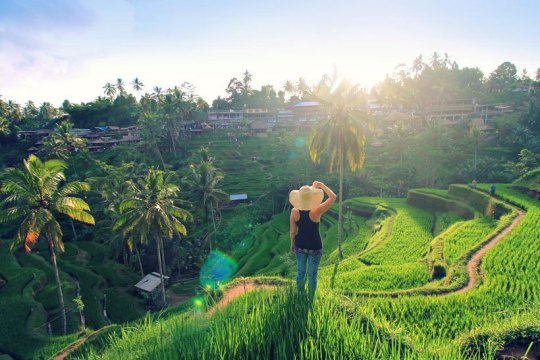
This post was written in collaboration with Orbitz.com.
Enjoy exclusive deals and get plenty of benefits, such as complimentary hotel upgrades by becoming an Orbitz Rewards member! Join here to become a member now!
If you like this article, please share.

ABOUT THE AUTHOR
Sabrina Iovino is the founder of JustOneWayTicket.com. She’s half German, half Italian and has traveled to more than 50 countries around the globe.
She feels weird to write about herself in the third person, so she’ll switch now. Phew…much better! Let’s restart:
Hi, I’m Sab! This is my blog and I write about the things I love. Mostly.
Follow me on Facebook | Twitter | Instagram | Pinterest | Google+ | Youtube


source http://cheaprtravels.com/10-awesome-things-to-do-in-ubud-bali/
0 notes
Photo
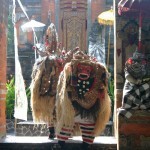
Gadeh, who drove us to Ubud last week, and then back via Tanah Lot, arrives at 8:30 to pick us up. We are off for a day of touring Bali. Because of the somewhat ancient and torturous back roads of Bali, we teamed up with the good folks at World Nomads for some travel insurance while in Bali. Here are followsummer’s recommendations to keep your Balinese adventure safe and covered: About 8:50 we arrive to see the Sari Wisata Budaya performance of the Barong & Kris Dance. The theme is the never-ending fight between good and evil, this time, personified […]
Source
0 notes
Photo

#barongdance #บาหลี #bali #indonesia #trip #travel #tour #vacation #waycation #waythegentle (at Barong & Kris Dance / Stage Uma Dewi) https://www.instagram.com/p/BzcFBtgHxz4/?igshid=1rf2fkxlme24
0 notes